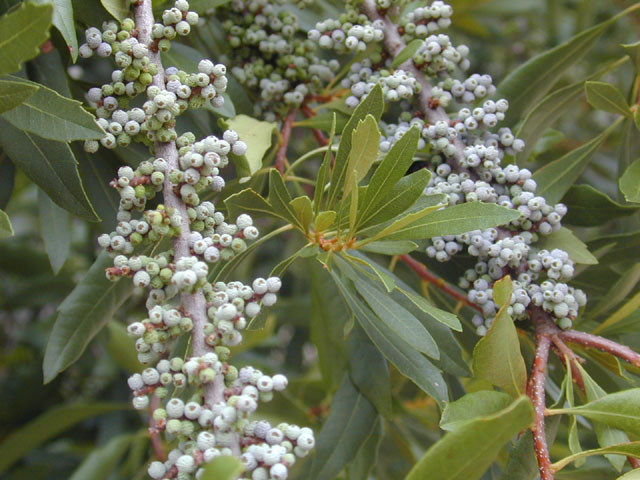Myrica pensylvanica
Northern Bayberry is a broadleaf deciduous shrub species that will grow about 2 m in height. The leaves are alternately arranged, narrow, oblanceolate shaped, glossy dark green, leathery, and are aromatic when crushed. The flowers are clusters of yellowish green catkins, not showy, and bloom between April and May. The fruits are small, whitish gray to silver coloured berries that ripen in August and persist through the winter. The berries are beneficial to wildlife species, like birds and small mammals. Bayberry is hardy and can be used for planting at difficult or disturbed sites. The roots are useful for controlling erosion and stabilizing shorelines. This plant spreads well through suckers and can produce colonies so is may be useful for filling in areas with no vegetation.Northern Bayberry grows best in moist to normal conditions with full or partial sun exposure. It prefers well-drained sand or humus soil but can grow in a variety of soil types and pH levels. It can tolerate infertile soil, wet soils, drought, strong winds, and salt (from marine or roads). This shrub can be naturally found in open forests, forest edges, and along river, lake, or sea shorelines.
Scientific Name: Myrica pensylvanica
Type: Shrub
Height: 2 m
Spread: 2 m
Moisture Level: dry, moist, wet
Light Conditions: full sun, part sun
Soil Conditions: sand, clay, loam, rocky, acidic
Zone (Hardiness of Canada):

